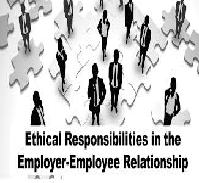Culture in Ethical Leadership and HR Policy Order Instructions: Culture, ethical leadership, and HR policy. The HR leader can be seen as the ‘conscience’ of an organization, providing important moral and ethical leadership when the organization is confronted with difficult situations. In a diverse organization, such difficult situations can arise when individuals from different backgrounds and cultures come in close contact.

Different groups can have differing notions of what constitutes ethical behavior, what is ‘fair’ and how to define the rights and responsibilities of employees. As you consider the role of HR policy in minimizing potential conflict within a diverse workforce, focus on the ethical dimension of HRM as an influence in policy development, and in anticipating and addressing differing ethical standards.
To prepare for this essay:
•Read the required files which sent by email.
•Critically evaluate and analysis of HR policy in managing a diverse workforce from the perspective of attention to ethical standards and norms
o Sharing a similar experience with or point of view on differing ethical standards as a potential source of conflict in a diverse work environment
o Recommending interventions that address ethical issues arising from the conflict in diverse organizations, including HR policy interventions (such as redesigning policy or changing the way it is implemented).
Culture in Ethical Leadership and HR Policy Sample Answer
Analysis of HR Policy in Managing a Diverse Workforce
The management of a diverse workforce in consideration of the ethical standards and norms of an organization focuses on a company’s initiative in maximizing the capacity of the employees in contributing to the ethical goals of the organization (Cooren, Kuhn, Cornelissen & Clark, 2011, pp.1146). Through an affirmative action in the implementation of HR policies directed towards managing diversity, an organization is in a position to incorporate the ethical necessities that address some of the unethical practices such as discrimination. HR policies, an organization can plan on initiating measurable ways that diversity can support the objectives, goals, strategic direction and the culture of an organization. This, therefore, builds an organizations diversity plan on the core values of respect for the dignity of other employees, credibility, trust, and integrity.
Contradictory Ethical Standards as a Source of Conflict in a Diverse Work Environment
Conflicts are inevitable in any human relationship, especially when individuals are committed to achieving a mission for a long period of time. It is, therefore, significant to ascertain that conflicts are likely to rise from the management of different perspectives that seem to be incompatible (McClure, 2012, pp.128). In consideration of this, conflicts are subject to arise from contradictory ethical standards since this would involve incompatible preferences, practices, and principles that employees believe such as ethics, political views, and religion.
This exchange may be considered as unhealthy especially in the event that no ideas are exchanged, a factor that may result in employee turnovers, increased work stresses, several litigations that are directed towards claims of hostility within the work environment (Armstrong, 2014, pp.8). An instance of this can be depicted in a case where an employee is raised in a community that believes when an individual folds the sleeves of his shirt it would mean disrespect or readiness to fight. Within a work environment, a worker may choose to fold the sleeves of his shirt with a different objective, a factor that would result in a conflict between the workers.
Recommending Interventions on Addressing Ethical Issues
In handling and addressing some of the ethical issues that arise from conflicts in a diverse workforce, organizations and management teams need to develop and implement workplace policies based on their company’s philosophies, code of conduct and mission statement (Bamberger, Biron, & Meshoulam, 2014, pp.65). These policies consequently need to be incorporated into the performance management programs with the aim of holding the workforce accountable for their actions. This, therefore, ensures that they are aware of the responsibilities that follow them in upholding professional standards within their job areas and the manner in which they interact with their subordinates and peers.
On the other hand, it is significant that organizations ensure workplace ethics training is conducted on the employees through the use of varied instructional approaches that ensure the employees’ are engaged in the learning process in resolving ethical dilemmas (Marchington, & Suter, 2012, pp.287). On the other hand, an organization may designate on Ombudsperson who is equipped in handling the conflicts that arise within an organization. In addition to this, an organization also needs to have an ethics hotline that allows employees to access confidential services in events where they may not share their workplace dilemmas with the managers.
Lastly, an organization may also consider applying its own workplace policy in a consistent manner while addressing some of the conflicts that arise within the work environment in relation to work ethics (Wright, 2014, pp.145). Communicating these expectations among the employees is additionally essential since this builds a collective commitment between the workers in managing some of the conflicts they encounter.
Culture in Ethical Leadership and HR Policy References
Armstrong, M. 2014 “Armstrong’s handbook of human resource management practice”, 13th ed. London: Kogan Page pp.12
Bamberger, P., Biron, M. & Meshoulam, I. 2014.” Human resource strategy: formulation, implementation, and impact”, 2nd ed. London: Routledge
Cooren, F., Kuhn, T., Cornelissen, J. & Clark, T. 2011. “Communication, organizing, and organization”. An introduction to the special issue. Organization Studies, 32(9), 1149-1170. doi: http://dx.doi.org/10.1177/017084061141083
Marchington, M. & Suter, J. 2012 “Where informality really matters: Patterns of employee involvement and participation in a non-union firm” Industrial Relations 52 (1) pp. 284-313
McClure, L. 2012. Anger and conflict in the workplace: spot the signs, avoid the trauma. Manassas Park, VA: Impact Publications pp.123-165. doi:10.1177/1350508414533165
Wright, A., 2014. “Organizational routines as embodied performatives”: A communication as constitutive of organization perspective, Organization, 7.pp.140-154 doi:10.1177/1350508414533165




